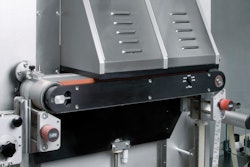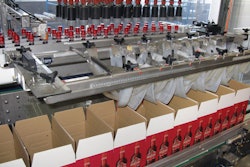
Over the last 20 years, the economic landscape for companies producing fast-moving consumer goods has changed dramatically. With the advent of a truly global economy, companies have changed their organizations and ways of working to various models in an attempt to capture emerging markets, while maintaining share in developed markets. This has a related impact in how they develop products and packaging systems.
As brands and products expand globally, especially into developing and emerging markets, many factors that will enable success in establishing that brand/product in the market are overlooked at critical phases. Following are four areas to consider in ensuring that any brand expansion and product launch has the best chance for success.
• Understand and set brand packaging standards.
The product isn’t just what’s inside the package, it’s a combination of both formulation/goods and the packaging system it comes in. Effectively, packaging is half the product, as it affects everything from performance to communication to consumer experience. Moreover, it represents the brand itself. A poorly performing pack that results in a negative consumer experience will surely erode brand equity, especially in a new market where that brand is not yet firmly established. To guard against this, it is important to set brand packaging standards early in any project. These standards define the “must haves” for the brand and reflect its core values and reason to believe for the consumer. Each element should be identified and the technology required clearly specified.
Many issues can cause inconsistent execution of these standards between markets. These can include cost pressure, supplier capabilities, supply chain/logistics differences, or even the design opinions of regional stakeholders. Setting clear standards upfront will lessen the potential for regional variances in execution.
• Translate consumer experience into quantifiable specifications.
Regional differences, in terms of consumer experience, must be understood. A full product life cycle analysis should be done early in any project to establish how the consumer will select, use, and dispose of the product/package. For package design, this translates into three main areas: aesthetic quality, dimensional values, and functional requirements. Aesthetics include visual standards as well as acceptable quality defects. Dimensional values define critical areas to design and translate to quality and performance. Functional requirements include areas such as opening or closing force (i.e., torque), force to actuate or squeeze (bottles and pumps), top-load compression, and others. Consumer testing using production quality components should be done to validate quality of design and make improvements.
• Identify capability differences in the internal and external supply chain.
With global expansion, often packaging systems are developed centrally or in key markets, and then deployed to other markets. The assumption often made is that the same materials or “equivalents” and process capabilities can be found in each market. The reality, however, often is different. Blow-molded HDPE bottles, for example, can have different grades of polyethylene, can be run on different machine platforms, and even have variations in layering or layer thicknesses. Much of this is dictated by the bottle maker’s assets and raw material supply, and it can have a major impact in dimensional quality, aesthetics, and overall functionality.
With regard to internal supply chain, manufacturing, and logistics, it is important to understand the entire supply chain in each sourcing location, from package creation through to consumer in-use experience. Understanding and addressing the requirements and differences in the entire chain will ensure efficiency, quality, and cost optimization.
• Understand customer point-of-sale requirements.
Even within a region, different customers or retailers have different requirements. Shelf height or pack width restrictions can vary, depending on how the product is organized on shelf or at point of sale. Understanding how the product will be positioned at point of sale, especially with a new launch or with a new customer, will affect package design. Often, package design concepts can change greatly as development progresses from idea to engineered system. Building customer requirements into the technical brief helps minimize changes and prevents time delays to launch.
These four crucial areas often can be either overlooked or addressed too late in the development process. Addressing these areas early in the design and technical brief phase will ensure that brand equity is protected, and that the product is being deployed globally in the most efficient way.
ABOUT THE AUTHOR: Mike Ross, CPP, is senior packaging manager at Unilever in the United Kingdom. For more information on IoPP, visit www.iopp.org.


























